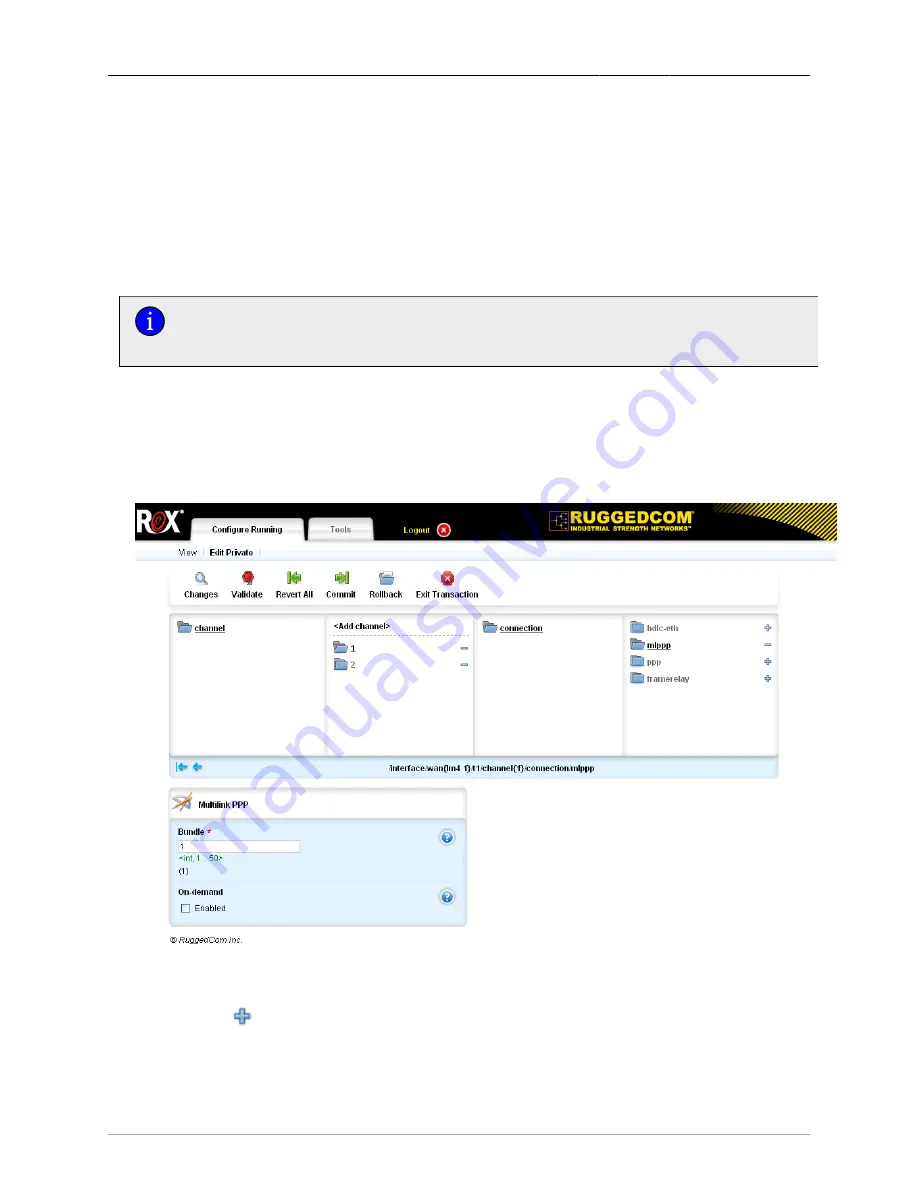
23. WAN
ROX™ v2.2 User Guide
244
RuggedBackbone™ RX1500
The PPP Multilink Protocol, also known as Multilink PPP or MLPPP, is defined in Internet RFC 1990.
Its purpose is to combine two or more PPP links into a single “bundle” to provide more bandwidth for
a point-to-point connection.
PPP Multilink must be supported on both sides of the link and may be used if there is more than one PPP
link connecting the two endpoints. PPP works by multiplexing data on a per-packet basis to transmit
across multiple PPP links. PPP uses sequence numbering to attempt to preserve the order of packets
transmitted across the bundle.
ROX™ is capable of running PPP Multilink over two or more T1/E1 links, but is capable of defining
only one MLPPP bundle.
For optimal PPP Multilink operation, ensure that each link in the MLPPP bundle has the
same bandwidth: the number of time slots, the clocking mode, and the rate for each T1/
E1 link used by PPP Multilink should be the same.
MLPPP interfaces use the following naming convention: {physical interface}-mlppp-{bundle
number}. For example, te1-mlppp-01 is an MLPPP interface on physical interface te1 with bundle
number 01.
MLPPP interfaces use the following naming convention: {physical interface}-mlppp-{bundle
number}. For example, te1-mlppp-01 is an MLPPP interface on physical interface te1 with bundle
number 01.
Figure 23.11. Adding an MLPPP Connection
From the connection submenu (see
Figure 23.8, “Adding a Connection”
), add an MLPPP connection
by clicking the
icon beside the MLPPP submenu. The Multilink PPP form appears.
Multilink PPP Form Parameters:
















































